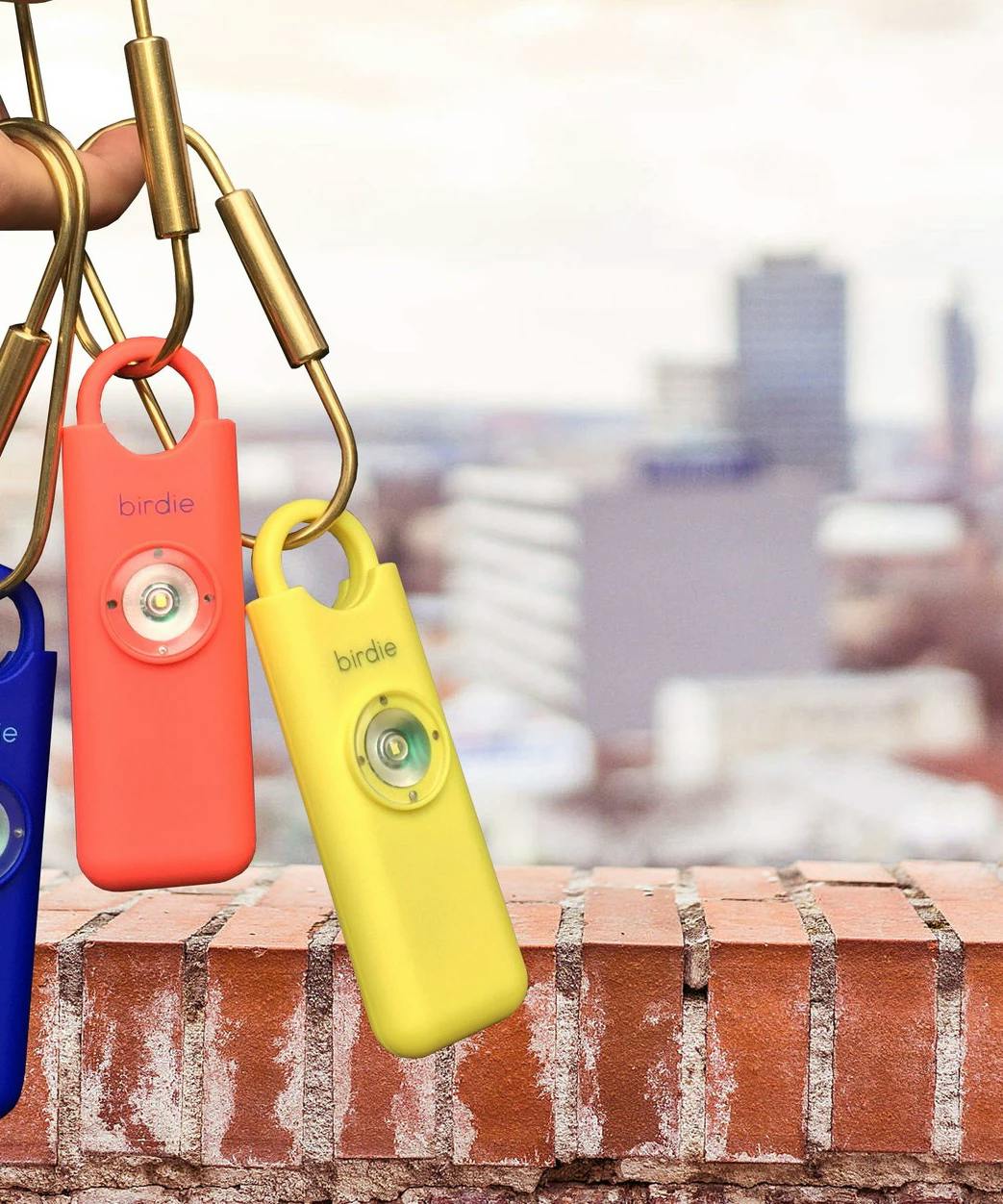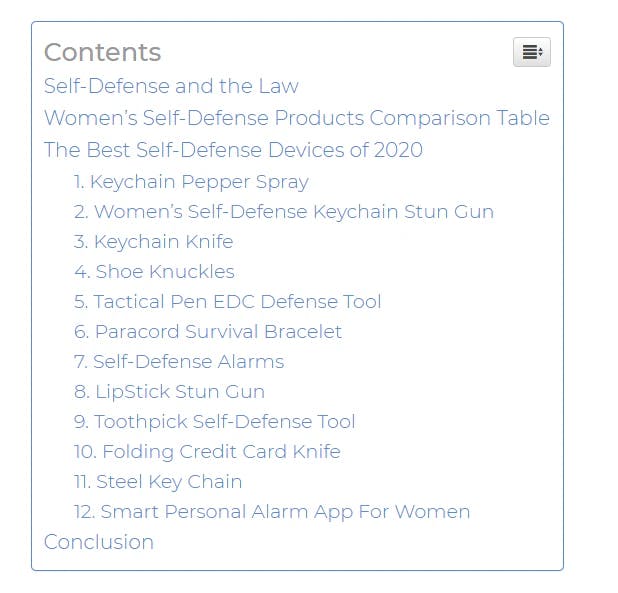Imperfect Self-Defense Tools Are Being Marketed As Great Solutions
No one walks alone at night, or in the dark, for fun. Especially not in a big city, where many people don’t know their own neighbors, much less care about them. When such an endeavor can be deadly, we need awareness around which tools are best to keep us safe — and which ones aren’t.

I’ve been in this situation myself. During my sophomore year in college, I was working on an end-of-semester project with a classmate. She and I noticed the time: a couple hours before midnight. We were uneasy with the idea of having to walk around downtown, just us two. It was about three blocks to the parking garage we were both at, and then we had to figure out how each of us could get to our cars safely, with one looking out for the other.
As we left the campus building, she pulled something out of her bag that resembled a stun baton. It dawned on me that I needed to look into self-defense tools myself. Years later, I came to favor tools that take 9mm or .45 ACP. But in my search for the perfect self-defense tool, I noticed that highly imperfect tools were being marketed as end-all-be-all solutions, further encouraged by the mainstream and trendy ads. Meanwhile, people rarely, if ever, publicly discussed their massive and potentially deadly downsides.
The Very Real Differences Between Men and Women
In the name of “female empowerment” (or something like that), the notion that men and women are fundamentally different is ignored in pop-culture. Gatorade came out with a commercial where female athlete Abby Wambach (two-time Olympic gold medalist soccer player) outperforms male athlete Usain Bolt (eight-time Olympic gold medalist and arguably the greatest sprinter of all time) — to the song “Anything You Can Do I Can Do Better.” It’s strange to draw a comparison between Wambach and Bolt. While she’s an amazing soccer player, Bolt is certainly faster than her.
A woman can defeat many women. But that rarely means that she can defeat a man.
Lucia “Lady Ali” Rijker, regarded as one of the greatest women kickboxers, was beaten by male journeyman kickboxer Somchai Jaedee — in just the second round of a boxing match, with Jaedee performing considerably well in the first round. In spite of Rijker’s undeniable skill and talent, biology’s a bitch. A woman can be great against many, or all other women. But that rarely means that she can take on many male opponents at all.
Why is this relevant to picking the best self-defense tool? Because we women have to consider how bigger, stronger, faster men could use these tools against us in a conflict. Buying into the culturally prevalent notion that women can be — and are — faster, stronger, better than their male counterparts could result in dangerous and potentially fatal situations.
The Serious Downsides That Get Ignored
When I searched “best self-defense tools for women,” one of the top hits took me to a blog post, laying out these tools:

Image Credit: survivalfitnessplan.com
Coincidentally, many of these tools were recommended to me when I first started looking into self-defense. But what I wasn’t told were the downsides. Maybe because the hope was that I’d never run into them because I’d never need to seriously use these tools in the first place. Or maybe because there’s this implicit assumption that if an assailant is made aware that you’re carrying mace, pepper spray, a knife, or a baton, then they’ll leave you alone. But no one can promise you that, and anyone who does is just trying to sell you something.
The Problems with Pepper Spray
Pepper spray can easily incapacitate its user. If the wind is blowing from the direction you’re facing, and an assailant is facing you, using it will only hurt you and make it all the easier for someone to take you down, pick you up, whatever they want. It’s not like you can say to the assailant “Switch spots with me?” and frankly, when you’re first presented with such a situation, the last thing you’re thinking about is the wind.
If the wind is blowing from the wrong direction, pepper spray will only hurt you.
Such an instrument requires practice, and it does expire. In order for it to be most effective, you’d need to practice using it, experience the sensation of having it in your face, and maybe even build up some resistance to it so that if it gets in your eyes you’re not fully out. Additionally, you’d need to keep tabs on when you got it, when you need to replace it, and generally make the effort to store it so it won’t get damaged and be rendered ineffective.
The Problems with Stun Guns and Batons
With stun guns and batons, you need to practice as well, or else a male assailant could easily rip it away from you, knock you down and take it from you, or otherwise hurt you back with it. Additionally, they need to be charged. (How terrifying would it be to pull it out and realize it doesn’t work?)
It’s often not enough to incapacitate someone, especially because that can be hard to do. With small, concealable stun guns (like the ones that go on a keychain) you need to get right up close to an attacker, and you need to hold it to them for 3 to 5 seconds. In a life-or-death situation, 5 seconds is way too long.
The Problems with Tactical Pens and Knives
With knuckles, tactical pens, and knives, the user also needs to practice, especially so they don’t hurt themselves or fumble with getting these smaller instruments out of a pocket or purse, and into their hand, ready to go. If they’re walking with it in their hand, they’d need to practice how to use them on someone — and given that these are potentially deadly, you can’t just practice seriously on someone you love unless you have a trainer version of the weapon.
If someone’s hell-bent on hurting you, or on stimulants, they can push through nonlethal pain.
Given that the average woman isn’t stronger than the average man, there’s the added problem that you may not hurt an assailant enough to incapacitate them. If someone’s hell-bent on hurting you, or on stimulants, they can push through nonlethal pain.
The Problems with Personal Safety Alarms
Recently, I saw an advertisement for a trendy-looking personal safety alarm. With the particular one I saw, it comes in nine colors and on a brass-looking keychain. It’s marketed as not just an empowering lifesaver, but a cute one to boot!
While the advertisement showed beautiful women singing the praises of this tool, and how much better they feel walking around with it, this is one of the worst kinds of tools for self-defense. It puts the onus of your own safety on other people. Someone pops out from an alley in front of you, and you pull out a pin in the keychain device that causes the siren to go off. There’s no guarantee that someone will come and save you in time, or at all. If a man can be brutally beaten on a New York subway until his body falls limp to the floor, even when surrounded by people, how can you guarantee that people will come to your aid?
If you thought “Well, surely someone would have stepped in if it were a woman,” you’d be wrong. A 65-year-old woman was stomped on by a man, in broad daylight, with at least two people nearby. In response, one of the witnesses closes a door on her. Why on earth would a siren prompt them to behave any differently?
There’s no guarantee that someone will respond to the siren and save you in time, or at all.
Certainly, some assailants could be deterred by the siren. It’s a loud, blaring noise that starts all of a sudden. But is that a chance you’re really willing to take?
All of these downsides are often not disclosed, much less advertised, because there wouldn’t be anything to sell at that point. Even one of the most truly effective tools for self-defense (a firearm) requires extensive training, given that if it’s taken from you, it could mean certain death.
Closing Thoughts
Of course, it’s imperative to encourage everyone to take their safety into their own hands: men, women, boys, girls. But we need to be realistic. If you’d happily send your daughter on her way to college, or an otherwise new and unfamiliar place, with nothing but pepper spray and the assurance that she’ll be safe with it, you’re doing her a massive disservice. Some tools can be effective when used properly. Others can work only under very lucky circumstances, and only if there are people around who are willing to stick their own necks out for you.
But we can’t conclude that it’s all hopeless and that there’s no way to guarantee our safety. Along with being fully transparent with ourselves and those we love on what successful self-defense means and entails, we need to bear the responsibility of keeping ourselves safe. Maybe that means avoiding dangerous situations and being situationally aware. While I’d love to live in a world where people don’t rape and murder because we have public service campaigns telling people not to do that, we don’t live in such a world and I don’t think we ever will. Be aware of yourself, your options, and practice so that if you’re ever in a difficult situation, you’re calm, collected, and most of all, able to act.
Readers make the world go round. Make your voice heard in the official Evie reader survey.